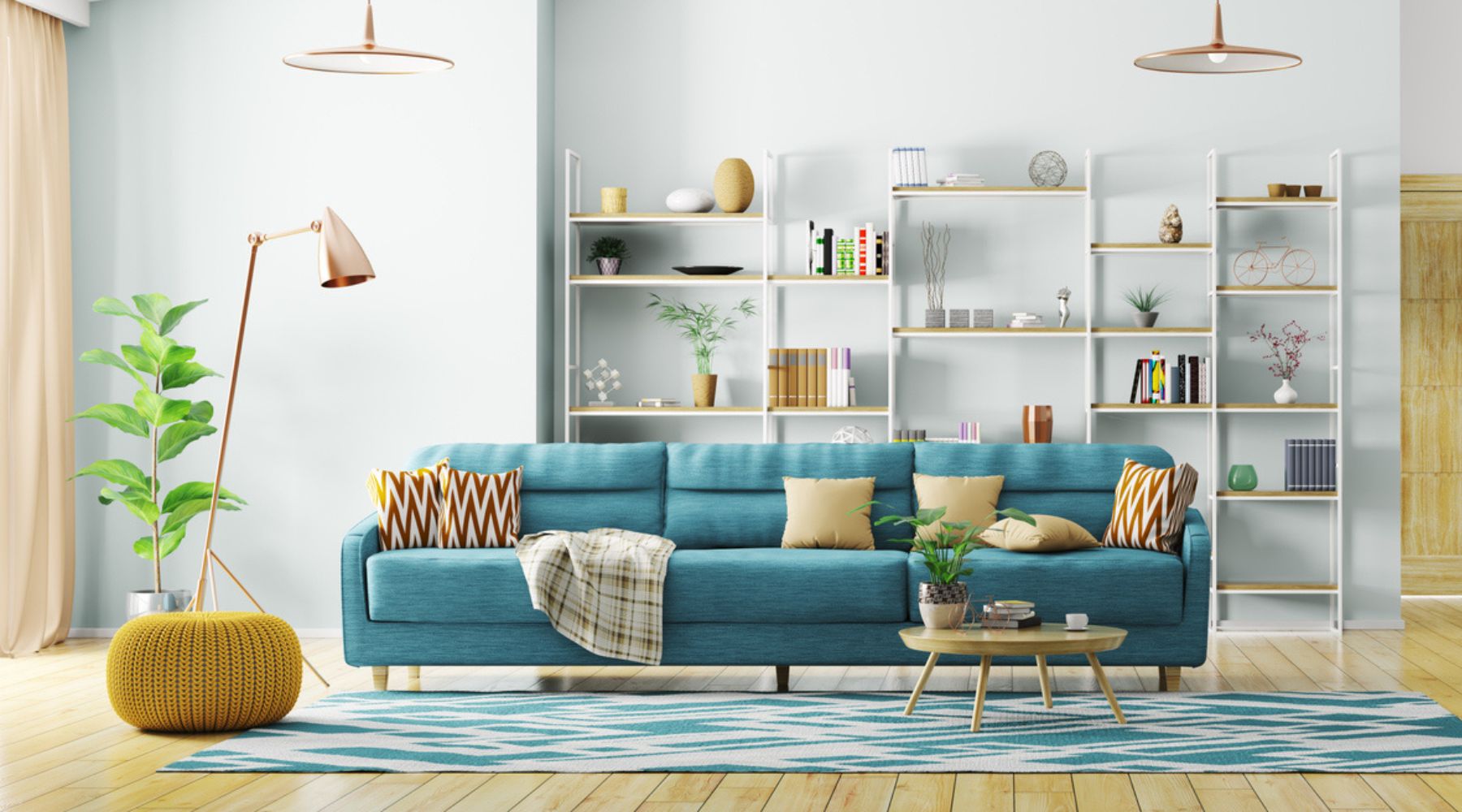Clean and Cozy: Scandinavian Interior Design Ideas
Clean and Cozy: Scandinavian Interior Design Ideas when it comes to creating a space that’s both minimalist and warm, Scandinavian interior design is the go-to style for many homeowners. Known for its clean lines, functional furniture, and an emphasis on light, this design approach fosters a sense of calm and relaxation. It’s no surprise that this design style has remained popular for decades. If you’re looking to infuse your home with a cozy, yet stylish ambiance, Scandinavian interior design is your blueprint.

What Defines Scandinavian Interior Design?
Scandinavian interior design is more than just a style—it’s a lifestyle. Originating from the Nordic countries, it embraces the beauty of simplicity, light, and nature. Key features of this design style include neutral color palettes, natural materials, and furniture that balances form and function. But above all, Scandinavian interior design is about making spaces that feel cozy and inviting, perfect for both relaxation and productivity.
Core Characteristics of Scandinavian Interior Design
- Neutral Color Schemes: A hallmark of Scandinavian interior design is the use of neutral tones like whites, grays, and beige. These shades allow light to bounce around the room, creating a bright and airy atmosphere, essential in regions with limited natural light.
- Natural Materials: Natural elements, especially wood, play a crucial role in this design style. Light woods such as pine, oak, and ash are often used in flooring, furniture, and decor. These materials help create a warm, organic feel that complements the minimalist aesthetic of Scandinavian interior design.
- Functional Furniture: Every piece of furniture in Scandinavian interior design is thoughtfully chosen, balancing practicality with beauty. It is common to see furniture that serves multiple purposes, from hidden storage solutions to modular pieces that adapt to the needs of the space.
- Light and Space: The love for natural light is central to this design philosophy. Scandinavian interior design embraces open spaces and large windows that allow sunlight to flood the room. In fact, large windows are often left unadorned or with light, sheer curtains to maximize daylight.
- Cozy Textures: Despite its minimalist appearance, Scandinavian interior design isn’t cold. Soft textiles like wool throws, plush rugs, and cozy cushions are abundant, creating warmth and comfort. The key is balancing simplicity with a welcoming environment.
How to Bring Scandinavian Interior Design into Your Home
Now that we’ve defined Scandinavian interior design, let’s dive into practical tips for bringing this style into your living spaces. Whether you’re redesigning a living room, bedroom, or even a kitchen, these tips will help you create a Scandinavian-inspired retreat in no time.
1. Start with a Soft, Neutral Base
To create a calm and serene atmosphere, begin with a neutral base. Whites, light grays, or soft beiges are common wall colors that open up a room and reflect light. These tones provide the perfect backdrop for other design elements and allow the natural beauty of wooden furniture and textiles to shine through.
If you prefer a touch of color, go for muted tones like pastel blues, soft greens, or warm terracotta. These colors add depth without overwhelming the space, staying true to the minimalist aesthetic of Scandinavian interior design.
2. Incorporate Natural Materials
Wood is at the heart of Scandinavian interior design. For a cohesive look, choose light wood furniture such as oak, pine, or birch. These woods not only contribute to the overall light and airy feel but also add warmth and texture to the space.
To further emphasize the natural theme, incorporate stone, leather, or woven materials. A wool rug, sheepskin throws, and jute baskets are great ways to introduce texture while maintaining that natural, organic feel that defines Scandinavian interior design.
3. Let in Natural Light
The more light, the better! Scandinavian interior design places a high premium on natural light, especially in colder climates. Use large windows or glass doors to let as much light in as possible. If your home has smaller windows, consider adding mirrors or light-colored furniture to reflect light and create a more open, airy environment.
Keep window treatments simple—light, sheer curtains are a great option to let sunlight filter through while still offering some privacy. Avoid heavy drapes that block light and make the space feel closed off.
4. Opt for Minimalist, Functional Furniture
In Scandinavian interior design, less is more. Furniture should be minimalist and functional, but also stylish. Look for pieces with clean lines, simple shapes, and neutral tones. Whether it’s a sleek sofa or a streamlined dining table, the furniture should serve a purpose without overwhelming the space.
For smaller rooms, choose multifunctional furniture like storage ottomans, fold-out tables, or wall-mounted shelves. This approach not only enhances the minimalist vibe but also helps maximize the available space.
5. Layer Soft Textiles for Comfort
One of the most important aspects of Scandinavian interior design is coziness. Despite the clean lines and minimalist approach, it’s crucial to make the space feel warm and inviting. Layering soft textiles is the perfect way to achieve this.
Add a plush wool rug to your living room or bedroom, or drape a chunky knit throw over your sofa. Cushions in natural fabrics like linen or cotton further add to the tactile experience, making the space feel welcoming and comfortable. Textiles can also be used to introduce subtle color and patterns into the room.
6. Introduce Pops of Color
While the color palette of Scandinavian interior design is neutral, that doesn’t mean you can’t add a bit of color. Opt for muted, soft hues such as dusty blues, soft greens, or warm mustard yellows. These accents can be incorporated through throw pillows, rugs, and artwork, bringing life to the space without overwhelming the serene atmosphere.
Art plays a significant role in Scandinavian interior design, but it tends to be minimalist and abstract. Think black-and-white prints, geometric designs, or nature-inspired pieces. These works of art will complement the neutral base while infusing personality into the room.
7. Create Cozy Nooks for Relaxation
A central element of Scandinavian interior design is creating cozy nooks that invite relaxation. Whether it’s a reading corner with a comfy chair, a nook by the window with soft blankets, or a cozy spot with a warm drink, these areas foster a sense of well-being and relaxation.
To make these spaces even more inviting, add soft lighting like table lamps or floor lamps. Opt for dimmable lights to create a warm, ambient glow, perfect for reading or unwinding after a long day.
8. Add Indoor Plants for Freshness
Scandinavian interior design has a strong connection with nature, and what better way to embrace this than by incorporating houseplants into your home? Plants not only add color and texture but also help purify the air and create a fresh, lively environment.
Low-maintenance plants like snake plants, succulents, and peace lilies are perfect for a Scandinavian interior design. Place them in minimalist pots or woven baskets for a cohesive look that complements the natural materials already in the room.
Incorporating Scandinavian interior design into your home creates a perfect balance of minimalism and coziness. By using neutral tones, natural materials, and functional furniture, you can transform any room into a bright, airy sanctuary. Add warmth with soft textiles, introduce subtle pops of color, and embrace nature with indoor plants. This design style promotes a serene, welcoming environment, ideal for both modern living and timeless comfort.
Whether you’re redesigning a small apartment or redecorating a larger home, Scandinavian interior design offers endless possibilities for creating a beautiful, functional space. Keep it simple, keep it cozy, and enjoy the peaceful, balanced lifestyle that comes with it.




